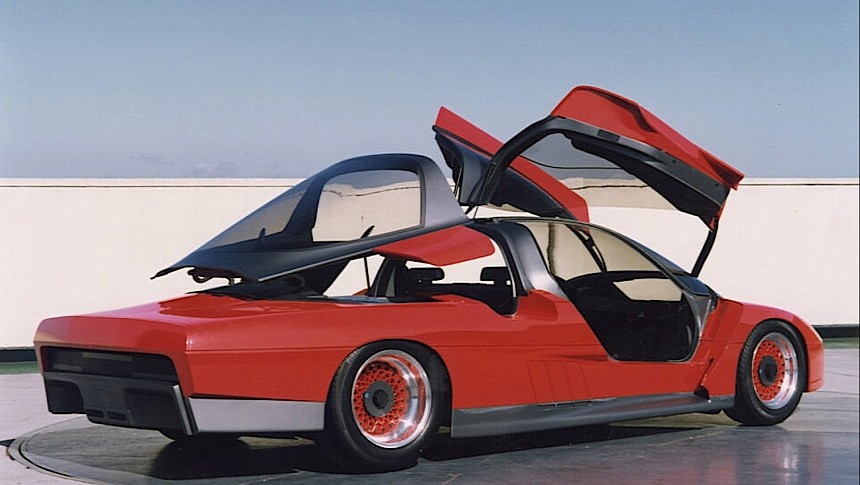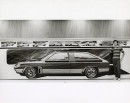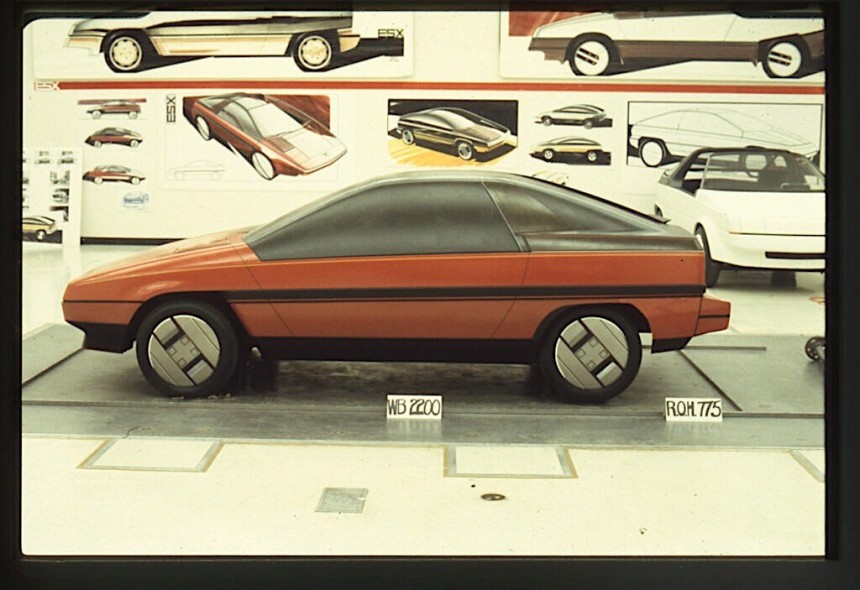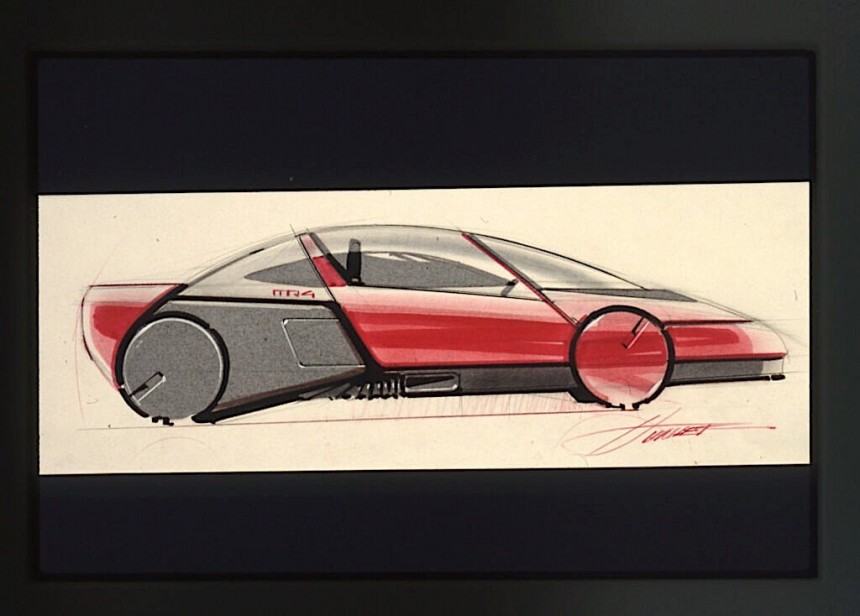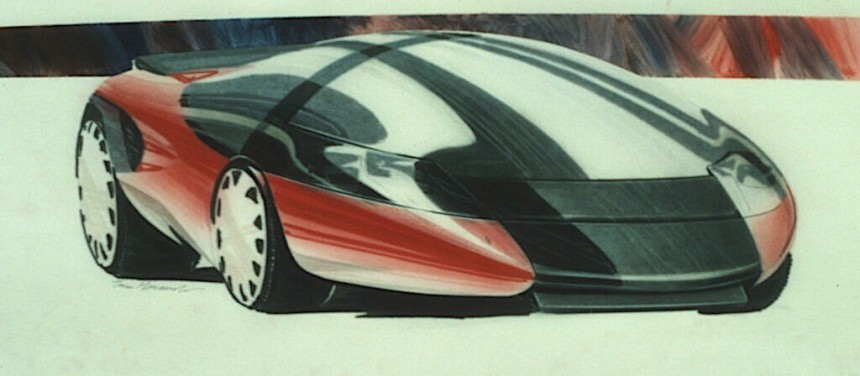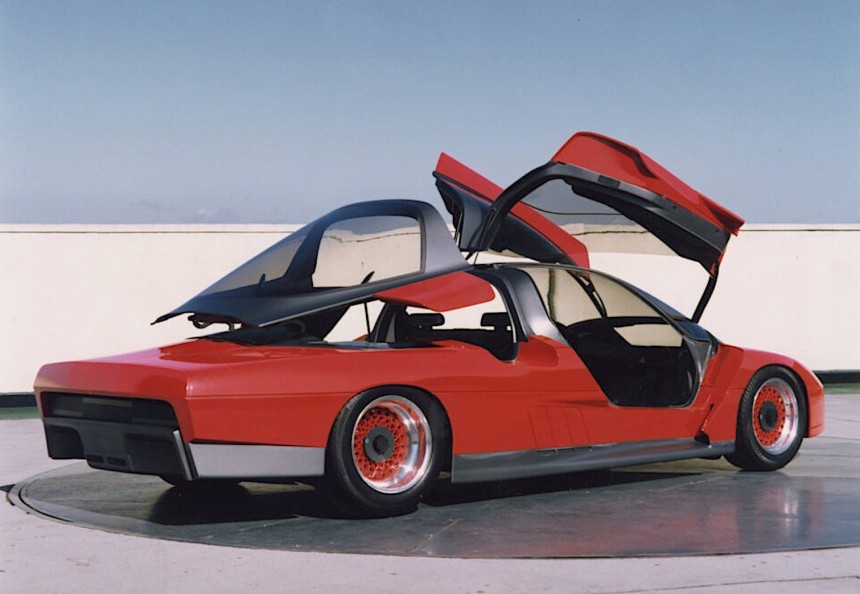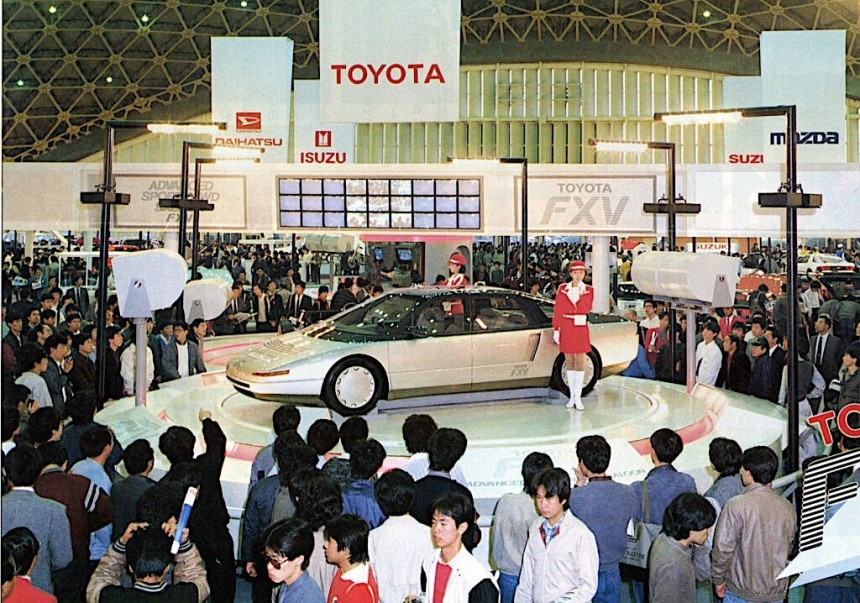If you go on Toyota's U.S. configurator right now, you'll not see a section dedicated to sports cars. The Japanese carmaker sells here only cars, minivans, trucks, crossovers, and SUVs. Not even the mighty Supra and GR86, which are, by all accounts, sports cars, aren't listed as such.
What does that mean? Isn't Toyota proud of what it offers in the segment? That can't be true. Do people hate these cars? Definitely not. Is the carmaker shy about it because it doesn't have a tradition of building sports cars? Probably not.
Toyota has always been considered the maker of vehicles for the masses, but that doesn't mean it hasn't experimented with more exotic rides over the years. In fact, just a quick look at the carmaker's past will have you convinced that if it really wanted to, Toyota would probably shame all competition in the sports car market as well.
At the end of last year Toyota showed the world a bunch of concepts few people knew existed. They didn't make it into production, but they are so wacky they couldn't have come to pass without the involvement of a specialized design studio.
That would be Calty Design Research, Toyota's creative arm established in 1973 in El Segundo, California. The team was supposed to tap into the unending pool of ideas only a civilization that was fundamentally different than the Japanese one could produce.
Calty is the name that is basically responsible for many incredible Toyota cars of the past, including the mighty 1978 Celica. Why, it even created the Baby Lunar Cruiser, that crazy vehicle meant to be used sometime in the future on the Moon or on Mars.
Given how in 2023 the organization celebrated half of a century on this planet, it was only natural for it to bring to light, as a sort of celebration, crazy ideas from its past. Little did we know, however, that was only the beginning.
For reasons that will probably become apparent soon enough Toyota decided to keep Calty in the spotlight, and at the end of last week released details on yet another batch of vehicles that were designed in the U.S. but never hit the roads in that exact shape.
This time, the focus falls on sports car concepts. There are so many of them, it seems, that Toyota will release details on them in two batches, based on the age they were designed in. This one is about the vehicles imagined in the 1970s and 1980s. There are six of them, some of which we don't remember ever seeing.
Simply called the Sports Car Concept, the first entry on this list came to be in 1975. It is something described by Toyota as groundbreaking, but other than what that means on a design level we're not told too much about it.
The car was imagined by Calty's people in several body styles, including a hatchback and a shooting brake, but first and foremost it was supposed to be a sports car. It didn't look like one, if we judge solely by this photo of it, but it did inspire some of today's Toyota products. If you look closely, you'll see some of the Concept's aging lines can still be seen in the Toyota cars of today.
It was back in the early 1980s, shortly after the end of the oil crisis, that carmakers started looking at different ways of doing things. Among other things for Toyota that translated into the birth of the ESX Concept.
ESX stands for Eco Sports Experimental and it is described as "Calty's take on an affordable, fun, and efficient sports car." To us today it looks kind of strange, with a very short body if you measure it end to end, and cues taken off the even stranger FXV you'll read about further on. It did come, however, with gullwing doors.
The project never moved past a fiberglass-reinforced plastic model status.
There were many cars made over the years with inspiration from the aviation world. Toyota tried to draw some ideas from fighter jets in the 1980s with a concept called MR2+2.
The pointy contraption is described as a purely experimental design, wrapping a body with the cabin pushed as forward as possible over a mid-engine layout. On top of it all sat a fighter jet-like cockpit, supported by barely visible A-pillars.
Because it was a purely experimental design, the Toyota MR2+2 never came to be.
The MX-1 is a catchy name for a mid-engine, high-performance sports car concept that was also shown for the first time in the 1980s. It was also a premium vehicle, meaning it was meant to blend performance with luxury appointments, something one doesn't really get from the bulk of Toyota's models.
Inspired by what came before it, the MX-1 looks a lot like a cheap Lamborghini, at least in this single image we were provided with. It even features scissor-style doors like the Italian machines. Unlike them, though, this Toyota concept was never made either.
If it doesn't stick the first time, try again. After the MX-1 proved it would never make it into production at the start of the 1980s, Calty took another shot at it mid-decade, with the 1985 MX-2.
This time, while retaining some of the design ideas used on the first iteration of the vehicle, it was at the same time a radical departure from it. That's because this one was imagined not only as a sports car, but as a race car as well.
Unlike the first iteration, this one came with gullwing doors, and an adjustable steering wheel that could be used from either the right or the left side of the car. Sadly, no one got to really test that, as the vehicle never made it into production.
FXV stands for Future Experimental Vehicle. It was a concept luxury coupe (so, not exactly a sports car) the Japanese showed for the first time during the Tokyo Motor Show in 1985.
The thing looks weird, by today's standards, a sort of trapezoid held together by a glass canopy, but it was shaped so based on aerodynamic concerns. More importantly, it featured something that may very well be considered the precursor of modern-day infotainment systems.
Sadly, nothing came of this concept, so if you don't remember it from the year of its debut, the photo above might shed some light on it.
Toyota has always been considered the maker of vehicles for the masses, but that doesn't mean it hasn't experimented with more exotic rides over the years. In fact, just a quick look at the carmaker's past will have you convinced that if it really wanted to, Toyota would probably shame all competition in the sports car market as well.
At the end of last year Toyota showed the world a bunch of concepts few people knew existed. They didn't make it into production, but they are so wacky they couldn't have come to pass without the involvement of a specialized design studio.
That would be Calty Design Research, Toyota's creative arm established in 1973 in El Segundo, California. The team was supposed to tap into the unending pool of ideas only a civilization that was fundamentally different than the Japanese one could produce.
Calty is the name that is basically responsible for many incredible Toyota cars of the past, including the mighty 1978 Celica. Why, it even created the Baby Lunar Cruiser, that crazy vehicle meant to be used sometime in the future on the Moon or on Mars.
Given how in 2023 the organization celebrated half of a century on this planet, it was only natural for it to bring to light, as a sort of celebration, crazy ideas from its past. Little did we know, however, that was only the beginning.
For reasons that will probably become apparent soon enough Toyota decided to keep Calty in the spotlight, and at the end of last week released details on yet another batch of vehicles that were designed in the U.S. but never hit the roads in that exact shape.
This time, the focus falls on sports car concepts. There are so many of them, it seems, that Toyota will release details on them in two batches, based on the age they were designed in. This one is about the vehicles imagined in the 1970s and 1980s. There are six of them, some of which we don't remember ever seeing.
The car was imagined by Calty's people in several body styles, including a hatchback and a shooting brake, but first and foremost it was supposed to be a sports car. It didn't look like one, if we judge solely by this photo of it, but it did inspire some of today's Toyota products. If you look closely, you'll see some of the Concept's aging lines can still be seen in the Toyota cars of today.
ESX stands for Eco Sports Experimental and it is described as "Calty's take on an affordable, fun, and efficient sports car." To us today it looks kind of strange, with a very short body if you measure it end to end, and cues taken off the even stranger FXV you'll read about further on. It did come, however, with gullwing doors.
The project never moved past a fiberglass-reinforced plastic model status.
The pointy contraption is described as a purely experimental design, wrapping a body with the cabin pushed as forward as possible over a mid-engine layout. On top of it all sat a fighter jet-like cockpit, supported by barely visible A-pillars.
Because it was a purely experimental design, the Toyota MR2+2 never came to be.
Inspired by what came before it, the MX-1 looks a lot like a cheap Lamborghini, at least in this single image we were provided with. It even features scissor-style doors like the Italian machines. Unlike them, though, this Toyota concept was never made either.
This time, while retaining some of the design ideas used on the first iteration of the vehicle, it was at the same time a radical departure from it. That's because this one was imagined not only as a sports car, but as a race car as well.
Unlike the first iteration, this one came with gullwing doors, and an adjustable steering wheel that could be used from either the right or the left side of the car. Sadly, no one got to really test that, as the vehicle never made it into production.
The thing looks weird, by today's standards, a sort of trapezoid held together by a glass canopy, but it was shaped so based on aerodynamic concerns. More importantly, it featured something that may very well be considered the precursor of modern-day infotainment systems.
Sadly, nothing came of this concept, so if you don't remember it from the year of its debut, the photo above might shed some light on it.
